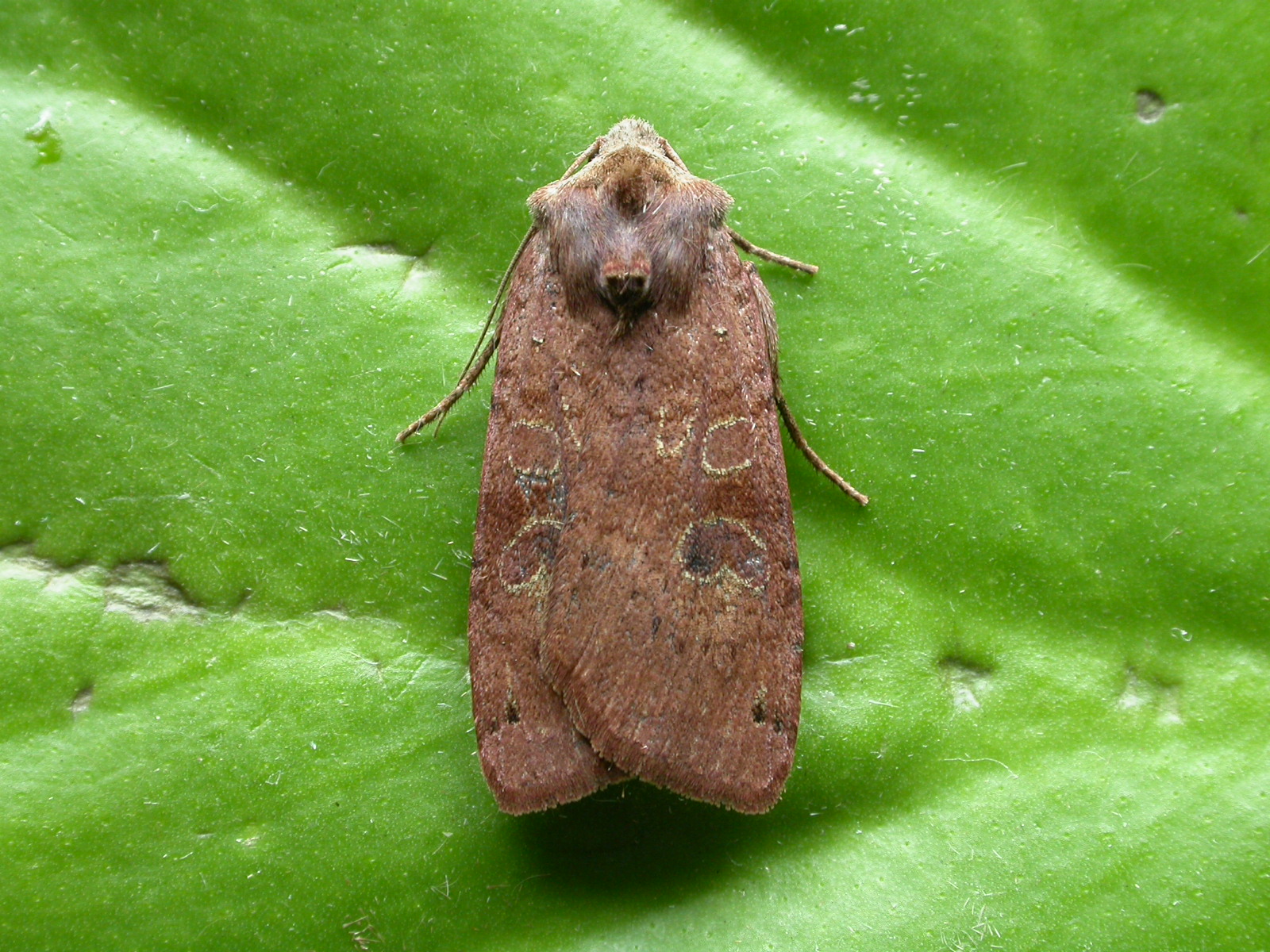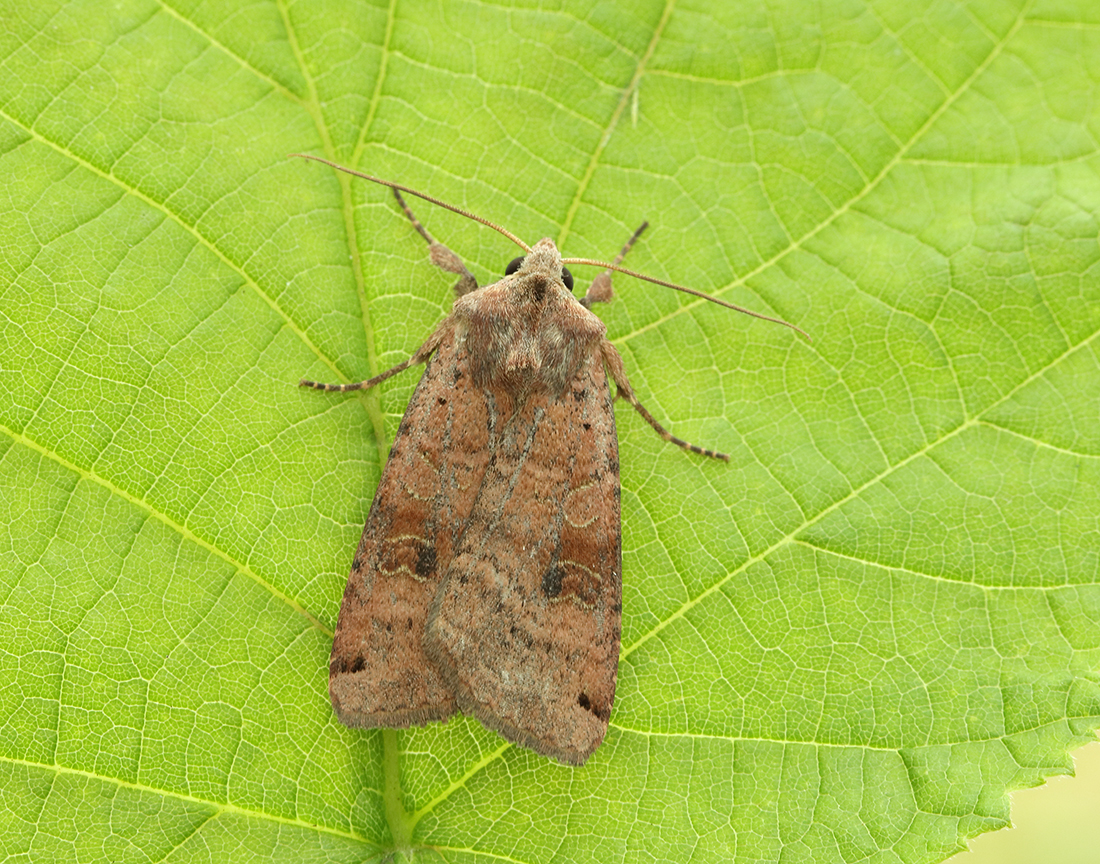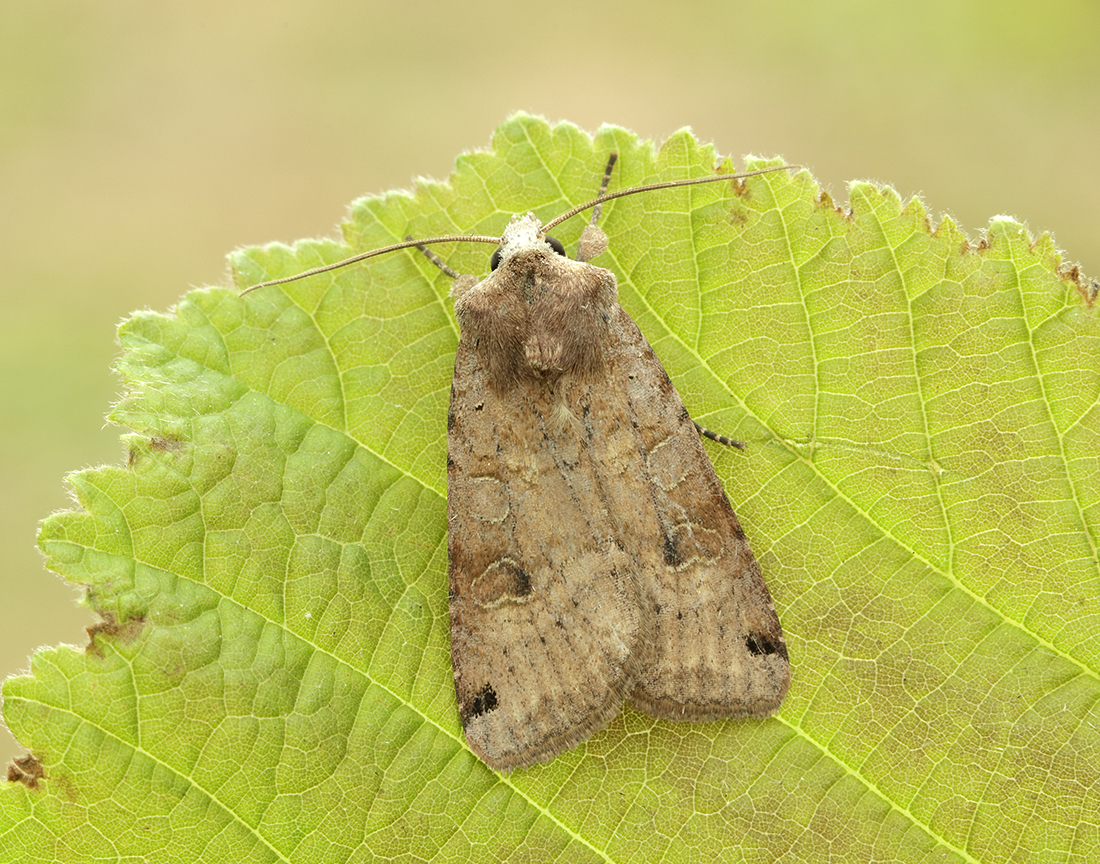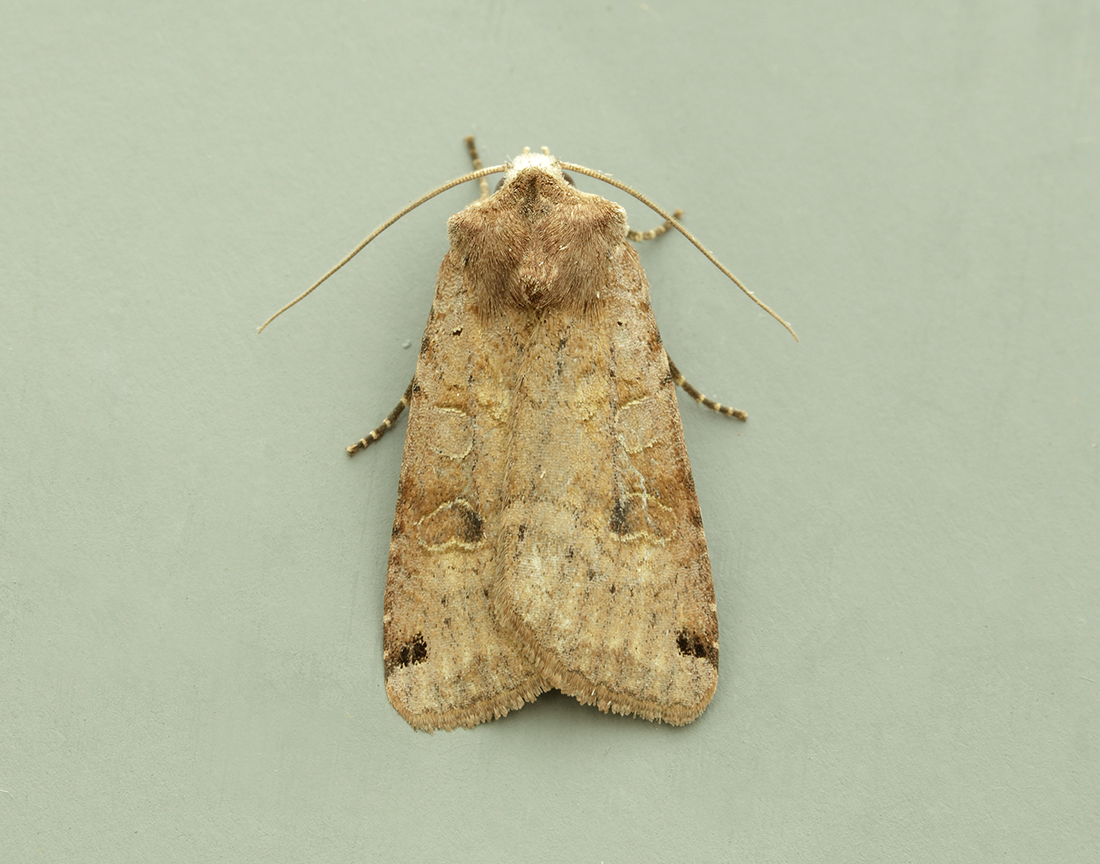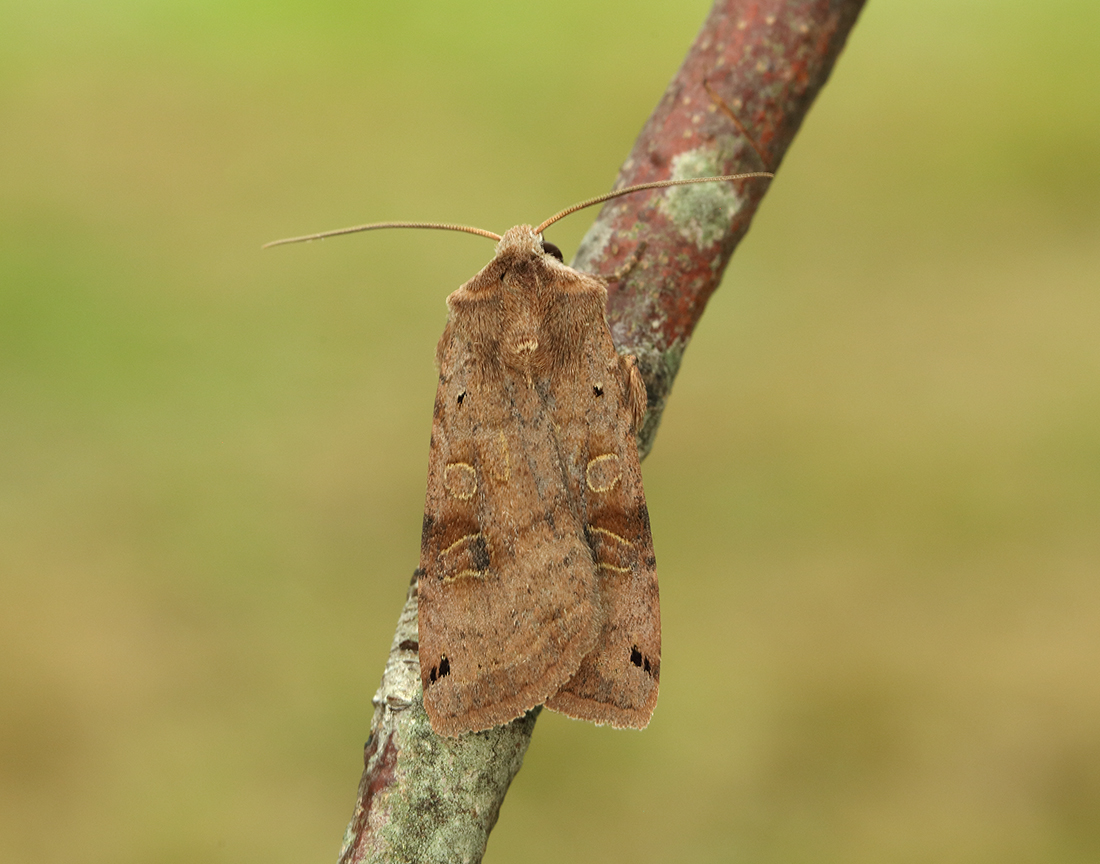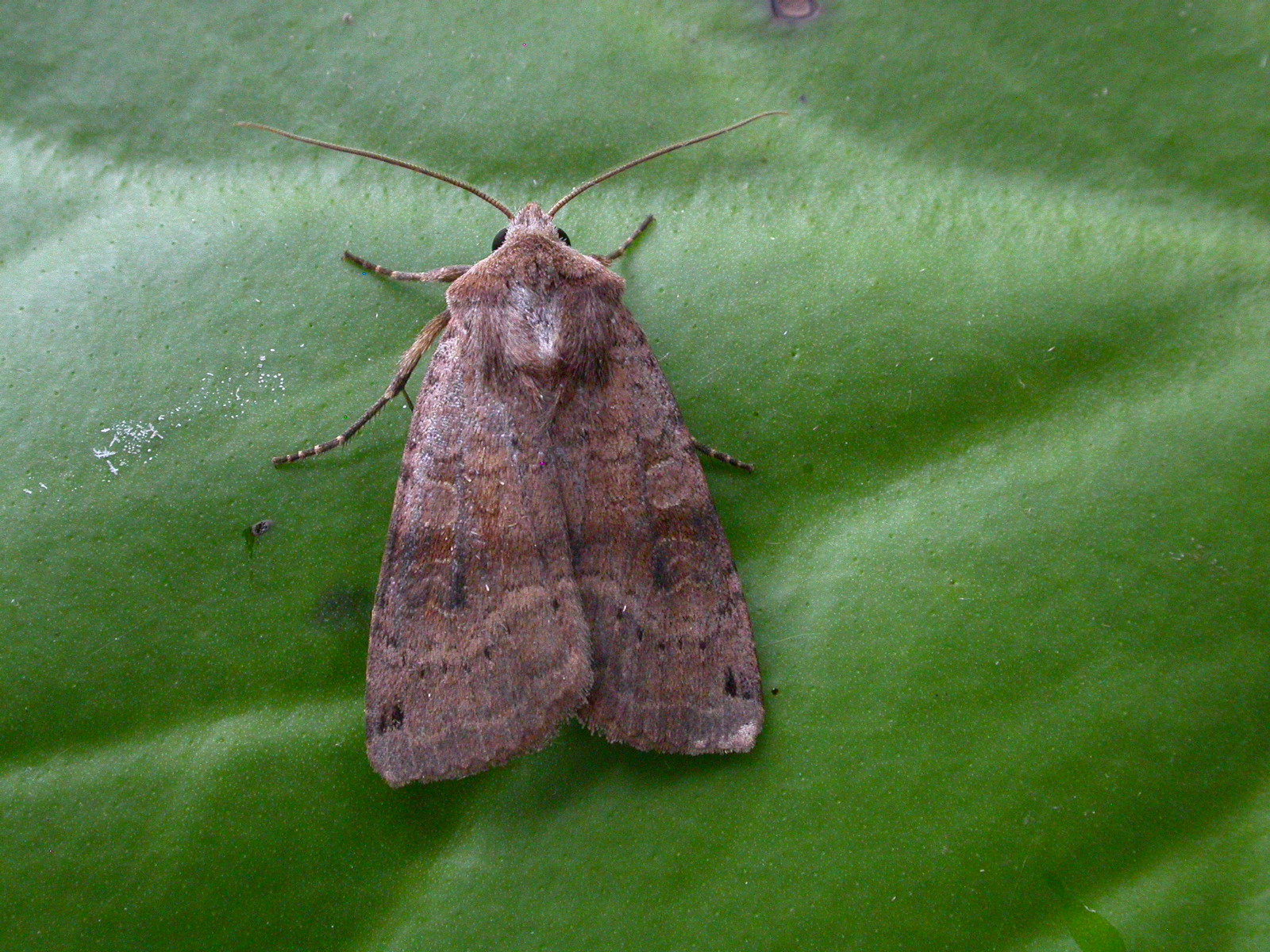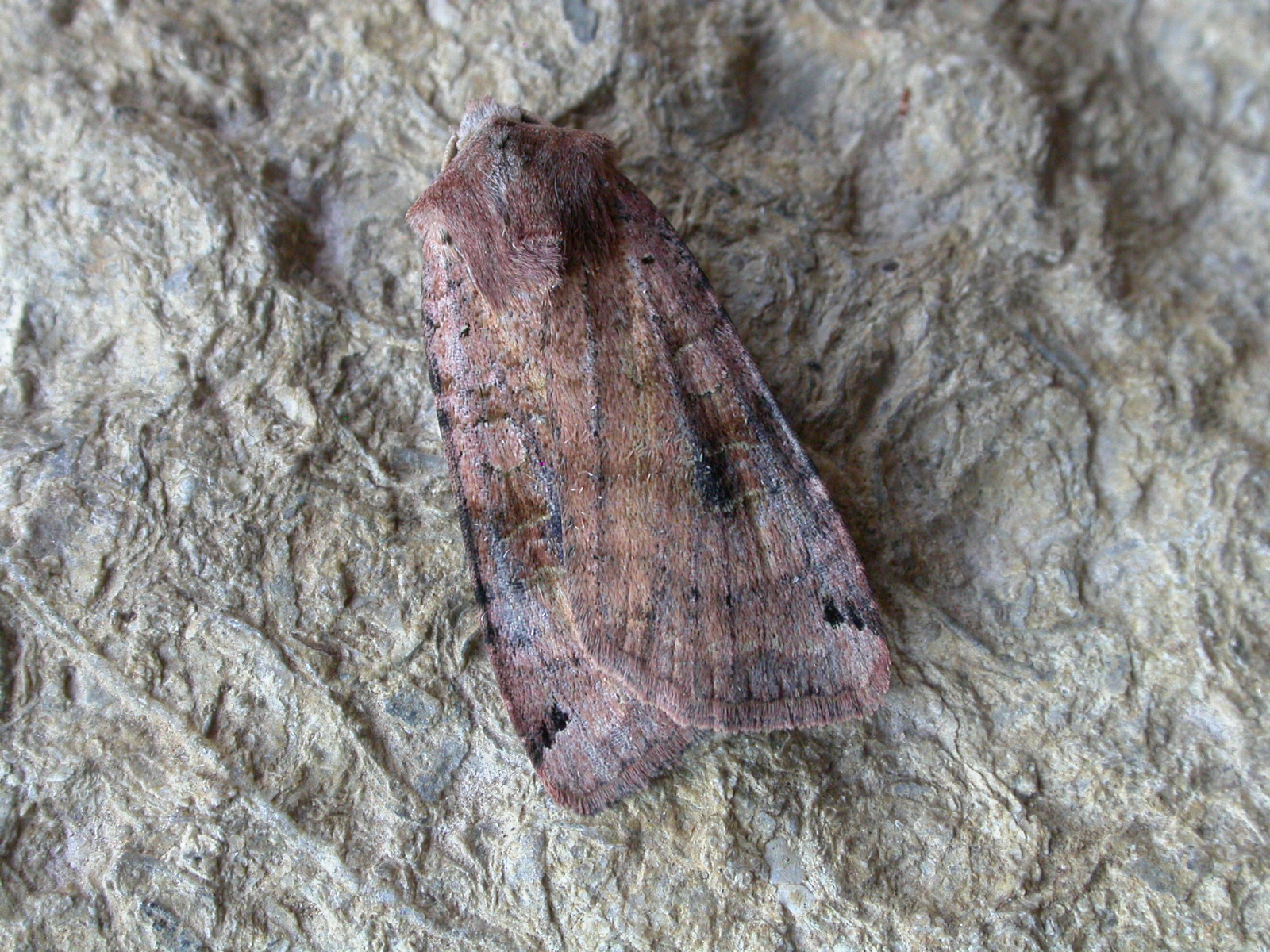Identification
Forewing rather plain but the two small, sharp black dots at the apex of the forewing are diagnostic.
Recording Method.
Attracted to light, also comes to sugar and flowers.
Life cycle
One generation. Overwinters as a small larva during August to May, with pupation just below the surface.
Larval foodplants
Common Nettle and other herbaceous plants. Also birches, sallows, Blackthorn and Bog-myrtle in the spring.
Habitat
A wide variety of habitats including woodland, heathland, wetlands and damp grasslands.
History
First recorded by Douglas Robinson (1870-71) who had found a few in July on Almorness (VC73). K. J. Morton of Edinburgh (1900) whilst on a visit in July 1899 to Wigtownshire had found this species in the Monreith area. Gordon (1913) stated that it was generally distributed and common in Wigtownshire. Earliest date was 15th July 1905.
Sir Arthur Duncan (1909-84) during his lifetime had found it at Closeburn, Tynron and Castlehill, Dumfries (all VC72). Archibald Russell (1944) listed it as occurring near Gatehouse of Fleet (VC73) during the years 1942-43.
During 1974-92 the seven Rothamsted stations recorded about 280 records. Then from 1992 to 2010 most of the remaining 600 records came from regular trapped sites at Kirkton and Durisdeer (VC72), Cally Woods and Carsfad near Dalry (VC73), with the remaining records from widely scattered sites across the region, proving it to be a very common moth.



